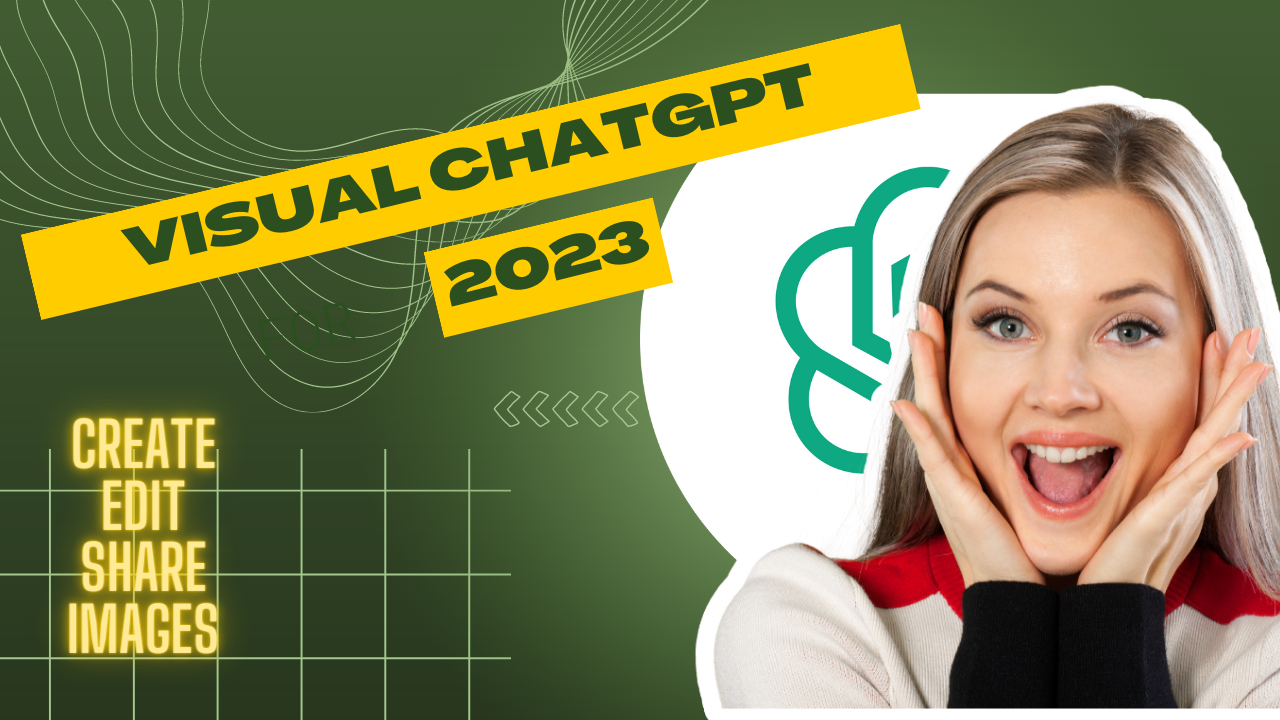- By - Gaurav Masand
- Posted on
- Posted in AI, ChatGPT
Visual ChatGPT: The Future of AI Image Creation and Editing
Introduction
TaskMatrix is a powerful open-source project that seamlessly integrates ChatGPT with Visual Foundation Models, allowing for seamless sending and receiving of images during conversations. It also supports the Chinese language.
TaskMatrix is designed to excel in a wide range of text and visual related tasks, from answering simple queries to providing in-depth explanations and discussions on a diverse range of topics. It uses advanced machine learning techniques to generate human-like text that sounds natural and relevant to the conversation at hand.
Though still under development, TaskMatrix shows immense potential for a variety of applications, including customer service, education, research, and content creation. It can be used to answer customer queries, provide support, and resolve issues; create interactive learning experiences, provide feedback, and answer student questions; collect data, analyze information, and generate reports; and even write articles, blog posts, and other forms of content.
If you’re interested in exploring the full capabilities of TaskMatrix, we invite you to visit the Github repository for more information.
Intensive Goal:
The main goal of the TaskMatrix project is to create a powerful tool that combines the strengths of both ChatGPT and Foundation Models. ChatGPT, or Language Model-based chatbots, are known for their ability to understand and generate human-like text based on the input they receive. They have a broad understanding of a wide range of topics and can engage in natural-sounding conversations.
However, ChatGPTs may not have in-depth knowledge of specific domains. This is where Foundation Models come in. Foundation Models are deep neural networks that are trained on specific domains such as image recognition or natural language processing. They have a deep understanding of their respective domains and can provide accurate and detailed information related to them.
By combining the strengths of both ChatGPT and Foundation Models, we aim to create an AI that can handle various tasks efficiently. For example, the TaskMatrix project can be used in customer service, education, research, content creation, and more. It is designed to provide comprehensive solutions to complex problems by leveraging both general and deep knowledge.
Demo

Source: – https://github.com/microsoft/TaskMatrix
Step By Step Guide to Install
- Clone the TaskMatrix repository by running the following command in your terminal:
git clone https://github.com/microsoft/TaskMatrix.git
- Navigate to the visual-chatgpt directory by running:
cd TaskMatrix/visual-chatgpt
- Create a new environment named “visgpt” by running:
conda create -n visgpt python=3.8
- Activate the new environment by running:
conda activate visgpt
- Install the required dependencies by running the following command:
pip install -r requirements.txt pip install git+https://github.com/IDEA-Research/GroundingDINO.git pip install git+https://github.com/facebookresearch/segment-anything.git
- Prepare your private OpenAI API key. If you’re using Linux, run the following command:
export OPENAI_API_KEY={Your_Private_Openai_Key}If you’re using Windows, run the following command instead:
set OPENAI_API_KEY={Your_Private_Openai_Key}
- Start TaskMatrix by running the following command:
python visual_chatgpt.py --load [Model_and_Device]
Here, you can specify the GPU/CPU assignment by using the “–load” parameter. The parameter indicates which Visual Foundation Model to use and where it will be loaded to. The model and device are separated by an underscore “_”, and different models are separated by a comma “,”.
You can find the available Visual Foundation Models in the table provided in the TaskMatrix repository. For example, if you want to load ImageCaptioning to CPU and Text2Image to CUDA:0, you can use the following command:
python visual_chatgpt.py --load ImageCaptioning_cpu,Text2Image_cuda:0
- If you’re a CPU user, we recommend using the following command:
python visual_chatgpt.py --load ImageCaptioning_cpu,Text2Image_cpu
- If you’re using a 1 Tesla T4 15GB (Google Colab), we recommend using the following command:
python visual_chatgpt.py --load "ImageCaptioning_cuda:0,Text2Image_cuda:0"
- If you’re using 4 Tesla V100 32GB, we recommend using the following command:
python visual_chatgpt.py --load "Text2Box_cuda:0,Segmenting_cuda:0, Inpainting_cuda:0,ImageCaptioning_cuda:0, Text2Image_cuda:1,Image2Canny_cpu,CannyText2Image_cuda:1, Image2Depth_cpu,DepthText2Image_cuda:1,VisualQuestionAnswering_cuda:2, InstructPix2Pix_cuda:2,Image2Scribble_cpu,ScribbleText2Image_cuda:2, SegText2Image_cuda:2,Image2Pose_cpu,PoseText2Image_cuda:2, Image2Hed_cpu,HedText2Image_cuda:3,Image2Normal_cpu, NormalText2Image_cuda:3,Image2Line_cpu,LineText2Image_cuda:3"
And that’s it! You can now use TaskMatrix for a wide range of text and visual related tasks.



